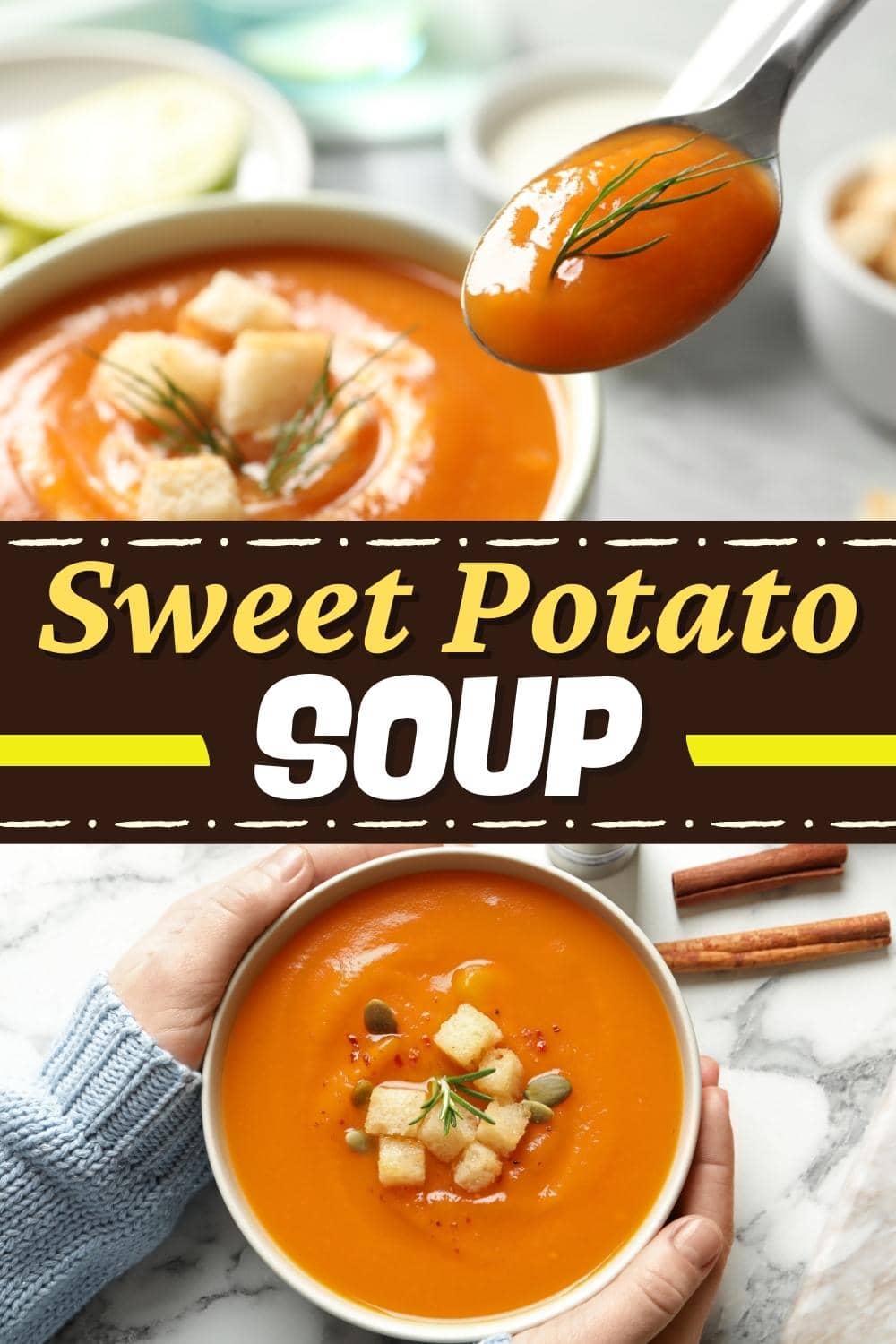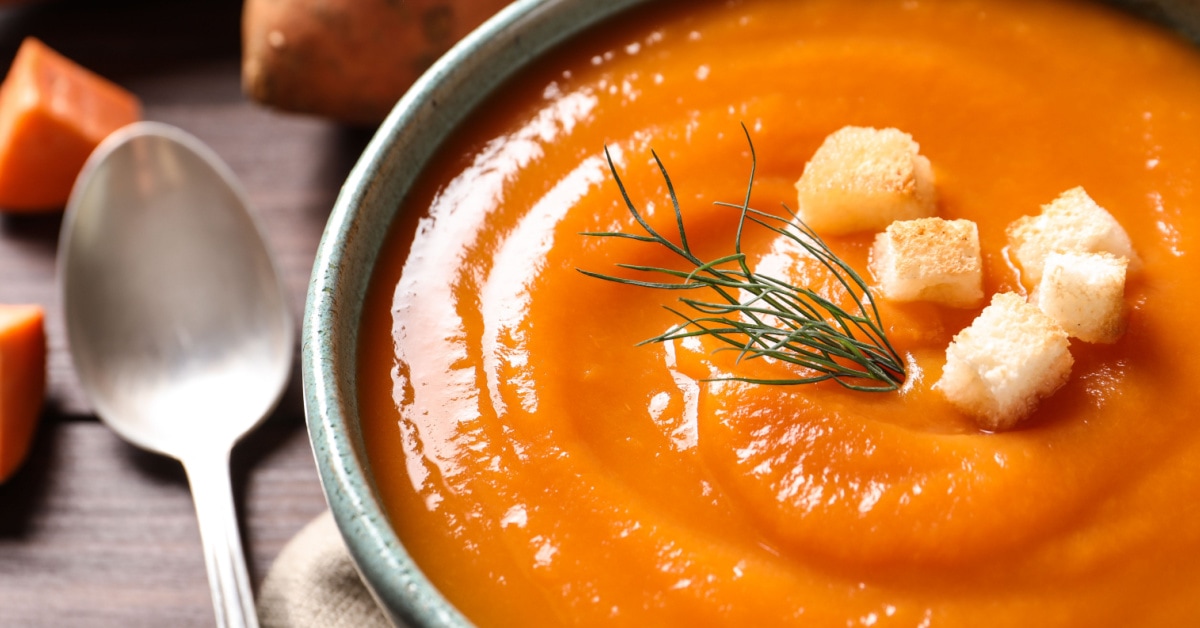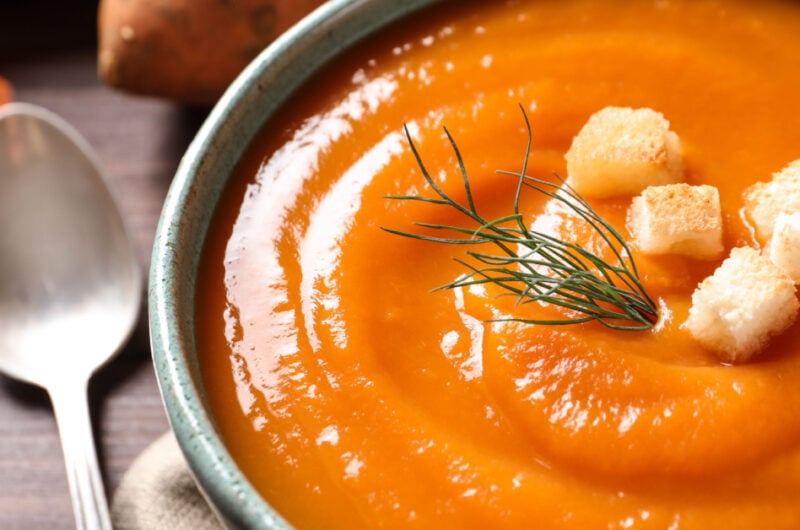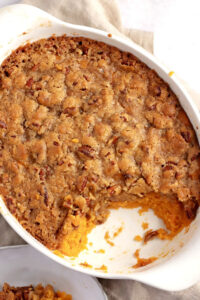Sweet potato soup is a delicious and simple comfort food you can enjoy year-round.
You can make it without much trouble on your stove. And it’s velvety smooth, and packed with sweet potato goodness.
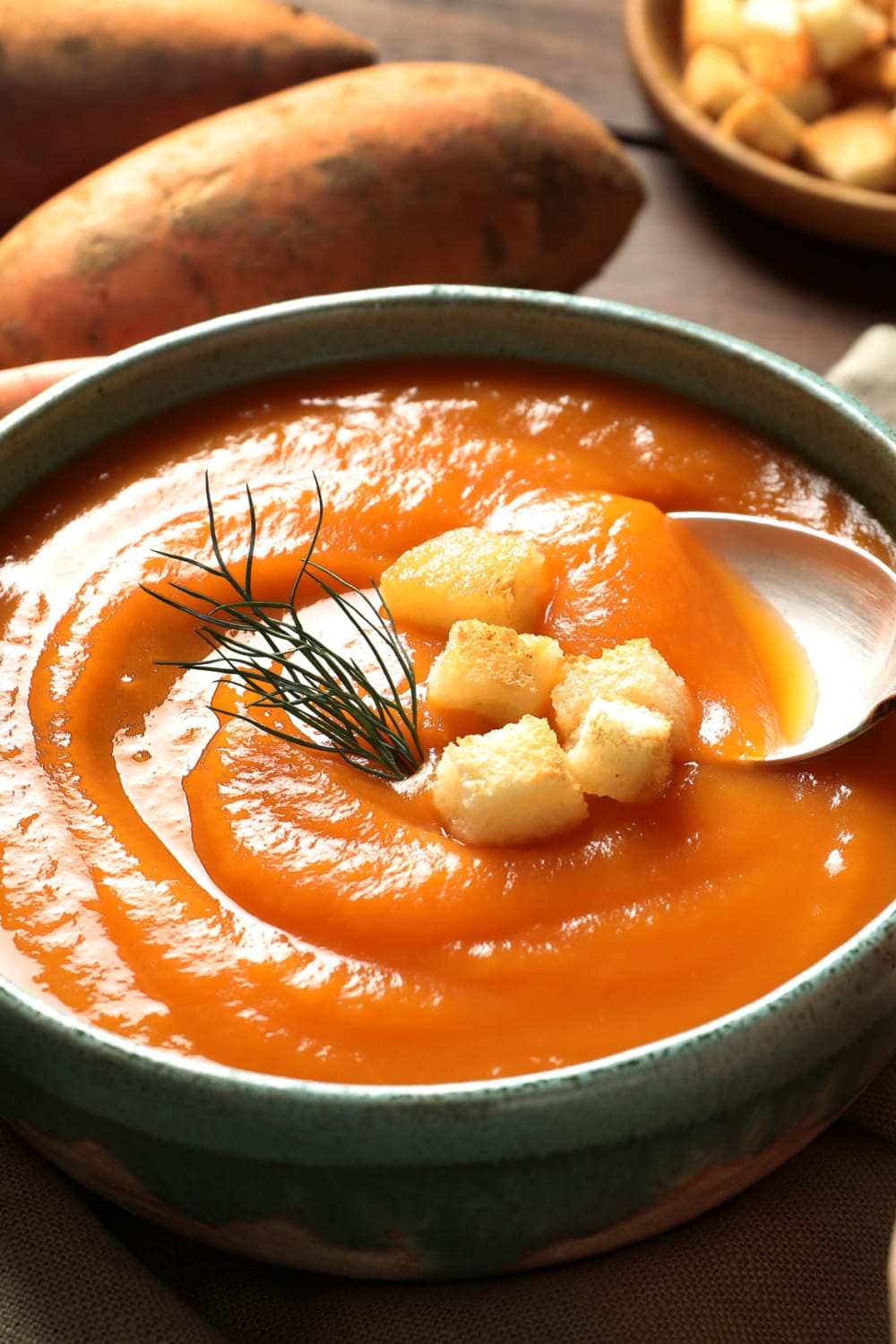
Not only does this recipe taste amazing, but its nutritional benefits are great, too.
A bowl of this creamy soup features plenty of vitamins C, B6, E, and D. It also has loads of fiber, iron, and zinc.
Plus, it’s one of those dishes that almost always elicits smiles from family members.
So if you need something sure to be a hit, give sweet potato soup a try.
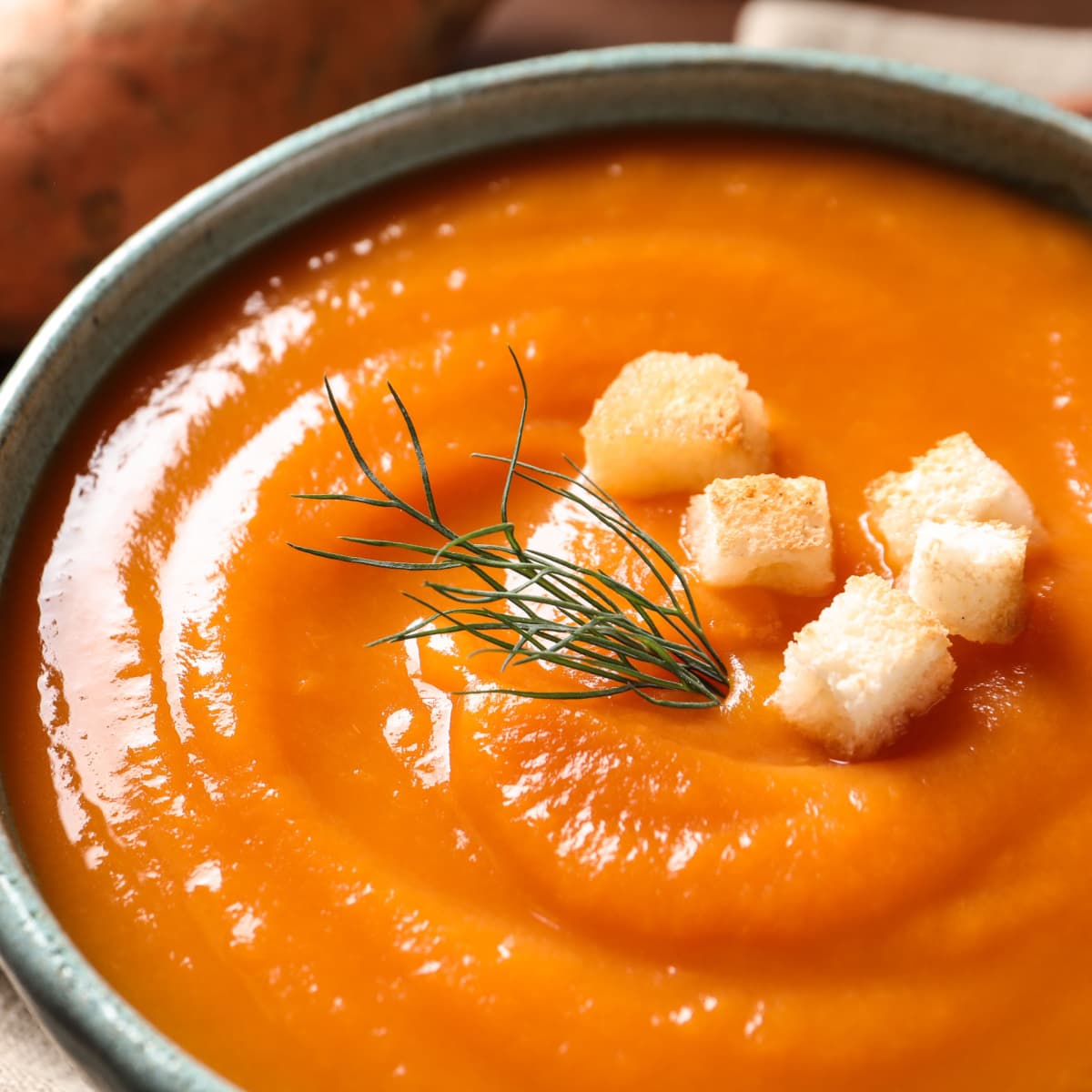
Ingredients for Creamy Sweet Potato Soup
The ingredients list for sweet potato soup is a little long, but don’t let that scare you.
Most everything is simple and easy to find. You probably have a lot of it already.
Here’s what you’ll need:
- Butter. The butter in this recipe keeps everything from sticking and burning. Be sure to use real butter, though. It’ll give you the best flavor.
- Sweet potatoes. You want to use two large sweet potatoes for the recipe. They’re the base for everything. They give the dish its lovely color and its signature flavor.
- Carrots. Three large peeled and diced carrots lend themselves nicely to the soup. They taste great and make the soup more filling.
- Apple. A single apple will make your sweet potatoes even sweeter.
- Onion. The onion adds a warm savoriness to the dish. It complements the lighter, sweeter flavors well.
- Red lentils. Lentils add protein, texture, and heartiness to the soup.
- Seasonings. Seasonings for this soup include ginger, black pepper, salt, cumin, chili powder, and paprika. This blend gives you a phenomenal taste that’s robust, bold, and not too spicy.
- Vegetable broth. You can use homemade or store-bought vegetable broth to make the soup thinner and soupier.
- Yogurt. A dollop of yogurt for a garnish makes the soup as creamy and rich as possible.

How to Make Sweet Potato Soup
Keep scrolling for the full sweet potato soup recipe. For now, I’ll hit the highlights.
1. Prepare and cook your vegetables. You want to cut and peel everything that needs it beforehand. Then, throw them all into a buttered pot on medium heat.
Saute them for approximately 10 minutes. Everything should be soft and the onions translucent.
2. Add the lentils, vegetable broth, and seasonings. Stir everything together and continue cooking until your kitchen smells of seasonings.
Once you smell the spices and the soup is boiling, it’s time for the next step.
3. Cover the pot and simmer. Be sure to lower the heat to medium-low so you don’t overcook the soup. Put the lid on the pot, and allow the soup to simmer for about half an hour.
4. Puree the soup. Finally, it’s time to puree the soup. Start by letting it cool, then work in batches. Fill a blender to half full (or less). Then, puree it and transfer it to a clean pot.
Repeat this step until all of the soup is pureed. If you have an immersion blender, you can also puree that way.
5. Simmer and then serve. Once all the soup is pureed, put it back into the original pot.
Let it simmer again for another 10 minutes or so. Add water if you need to thin it.
Then, transfer it into serving bowls, add your toppings, and serve.
And if you’re wondering what to serve with potato soup, it’s amazing with crunchy croutons and fluffy dinner rolls.

Storage and Reheating
If you have leftovers you plan to eat within 5 days, don’t worry about freezing them.
Instead, allow the soup to cool thoroughly. Then, transfer it to an airtight container, and stick it in the fridge.
It’ll stay fresh for about 5 days.
To serve it, reheat it on the stove instead of the microwave*.
Use medium-low heat and stir continuously. Once the soup is heated through, it’s ready to serve.
*Note: Using a microwave to reheat the soup will remove some of its flavor. It won’t taste as fresh, and the texture won’t be precisely the same either. It’s best to reheat it on the stove.
How to Freeze
If you have too many leftovers to eat in 5 days, you’ll want to freeze the soup. Luckily, doing so isn’t difficult.
You can use any freezer-safe, air-tight container.
These can include freezer-safe Tupperware, silicone soup trays, or even Ziploc bags.
Simply allow the soup to cool before transferring it into the freezer-safe container.
If you’re using Tupperware or silicone soup trays, you can fill them nearly to the top.
If using Ziploc bags, fill them at most 3/4 full. Then, remove all the air from the bags and flatten them as much as possible.
Write a date on the containers, and place them in the freezer.
You can keep them there for 2 to 3 months. Reheat the soup on the stove when you’re ready to serve it.
